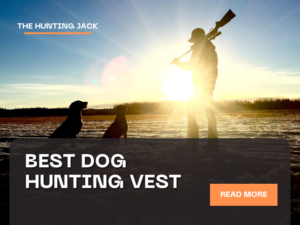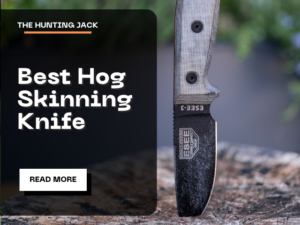To be the best deer hunter, you need more than just the best gun and hunting gear. Learning the language of deer can put you a cut above the other hunting party members.
Deer are very talkative. This is surprising, given how gracefully silent they are when striding across open plains. However, they actually have a wide-ranging vocabulary. Deer can make over 400 unique sounds, each of which conveys a special message.
Master these, and your hunts may become more successful – and certainly a lot more fun, too! This guide will explore the main deer calls, as well as explain some of the others you’ll likely hear while out hunting.
Table of Contents
ToggleHow Do You Use Deer Noises When Hunting?
A range of noise-making tools is available that can be used to replicate the sound of deer. We’d recommend using deer noise tools alongside deer attractants, such as a scent attractant or a deer block. This way, you create a more effective lure for deer.
Deer noises are worth learning as they can help your chances of drawing deer into shooting ranges significantly. They can be used to help deceive a deer into thinking you’re a doe looking to mate or a buck looking to fight. Both options can help bring deer out of the wild and into shooting range.
While I’m not expecting you to master the full deer language (I’m not yet at a fluent level myself), there are some basic deer sounds you should know. These basic noises include the buck grunt, the doe bleat, and the deer snort.
I also don’t expect you to be able to replicate the deer sounds yourself. There are several handy deer call noise tools available that make specific noises for you. Throughout this guide, I’ll highlight some of the best noise tools I’ve used.
The Main Call Sounds
As we’ve already said, you don’t need to be able to maintain a conversation with a deer. To understand the conversations of deer, you really only need to know the three core noises – the grunt call, bleat sounds, and the wheeze. Although basic, these noises can inform you about the deer activity in your hunting range. Some noises you want to hear, while others you don’t.
The standard grunt
Deer grunts – also referred to as ‘contact grunts’ – are the most common deer call sound you’ll encounter. Both bucks and does make soft, long grunts to one another. This non-threatening and short grunt is how deer greet each other. A deer may also use a simple grunt to get the attention of another deer that is some distance away.
A doe grunt is much higher in pitch due to the fact they have smaller bodies.
Given its sociable and non-threatening purpose, the standard grunt is also the most common deer noise replicated by hunters. If you see buck deer in the distance, you can use a contact grunt call to bring them closer. This may encourage the buck to move closer, or at least start walking in your direction.
Alternatively, you can try blind calling. This is when you grunt call into an area of wilderness that you suspect has deer presence. If successful, this can bring deer to you – rather than you to them!
It’s possible to create low deer grunts on most standard hunting reeds.
The buck grunt
The buck grunt is more aggressive than the standard deer grunt call. This grunt is performed only by males and is used to assert dominance. This grunt is shorter, deeper, and louder than the standard deer grunt.
A buck may also make this noise when it has selected a doe to mate with during rutting season. As it chases a doe, the buck will likely make this dominant grunt continually. This often sounds like the buck is out of breath. Some refer to this continual noise as a deer trailing grunt.
Whenever the buck has a doe cornered, they will start making a tending grunt. Like the chasing grunt, this is continual and sounds aggressive.
This grunt can be mimicked by hunters, as it can be used to create deer movement in your chosen area. If other deer hear this call of dominance, they may start to move out of the territory. With more deer movement encouraged, you increase your target options.
To create the buck grunt accurately, you’ll need a high-quality grunt call reed.
The doe bleat
It’s not just the bucks that do the talking; does grunt at each other and also bleat. Deer are highly sociable animals and doe especially love to converse with one another. They do this primarily through soft grunts and bleats. The purpose of which is primarily to interact – they obviously don’t try to assert dominance over other does.
However, the bleat changes during the rutting season. When the deer is ready to mate, they will start using their estrus bleat to gain the attention of bucks. This bleat is of a higher pitch and is often likened to a kazoo. A doe will stand still and make this mating bleat until a buck has visited her. This bleating is sometimes referred to as breeding bellow.
If you’re hunting during rutting season, the bleat is one of the best deer calls you can make. But how do you make this particular deer call?
Professional deer hunters either use either a bleat call can or a grunt call tube. These are easy to use, and only require you to turn over or shake either the can or tube. For best results, I’d recommend getting a doe urine attractant. This will make your bleats extra convincing.
The snort wheeze
If you’d like to attract particularly aggressive deer, you should try snort-wheeze deer calling. Deer make a snort-wheeze noise whenever they want to initiate a fight with another deer. This could either be territory-related or because they’re both attracted to the same doe.
As the name implies, a snort-wheeze is literally a snorting noise followed by a wheeze. It is normally done after a series of tending grunts. When performed, it can seriously anger any dominant bucks in the vicinity. Replicating this noise will cause dominant bucks to charge in your direction. Alternatively, it will cause less-dominant deer to flee.
Either way, the snort-wheeze is a surefire way to get the male deer in your area moving around.
However, it should not be used as your main port of call. whitetail deer do not use this sound often, and if you use it continually it will make them suspicious. Instead, focus on the soft grunt and doe bleat, and use the snort as the last resort. It’s useful when deer hunting, but should only be used once per hunting trip.
Other Deer Calls You Should Know
As aforementioned, deer communicate with each other through a wide range of noises. Some are used less so than others, both by deer and by hunters. If you’d like to expand your deer calling vocabulary, you can also learn the following calls:
The buck rattle
The buck rattle – sometimes referred to as ‘rattling antlers’ – is a great way to get a buck’s attention during the pre-rut season. Interestingly, the buck rattle isn’t actually a noise that deer vocalize – it is the sound of two deers battling.
Deer often take to fighting one another in the lead-up to rutting season. Obviously, this is done to assert authority and so that deer can secure the doe they want.
The buck rattle sound is made when deer antlers hit off each other. When deer in the area hear a buck rattle, they naturally walk toward the sound in order to spectate the battle.
If you plan on hunting around the rutting season, we’d recommend investing in a good-quality buck rattle bag. This way, you can safely create the sound of deer engaging in a fight – without having to actually stand near two deer sparring it out!
Buck roar
The buck roar is probably the least likely deer sound you’ll hear, but still worth mentioning. This is a huge, drawn-out, and loud grunt. It is made by buck deer when they get particularly excited during a chase. Alternatively, it can be interpreted as an aggressive noise, too. Some bucks will issue a roar whenever they feel angry or wish to engage in a fight.
Although it would be possible to replicate a buck roar, it may be too much effort for what it’s worth. It’s uncommon amongst whitetail deer, so wouldn’t guarantee you any real response. Roar cans were really popular amongst deer hunters a few years ago. However, the popularity of this deer call waned once hunters realized it wasn’t producing as many results as others.
Some bottleneck grunt reeds are capable of replicating the buck roar.
Deer Fawn Call Sounds
While you won’t be hunting for deer fawns, it is beneficial to know the sounds that fawns commonly make. Not only will this help you distinguish adult deer noises, but you can also replicate fawn noises in order to attract adult deer. The main fawn call sounds include:
Fawn bleat
The fawn bleat is a common sound amongst young deer. It cannot be used to attract adult deer, but all good deer hunters should be able to identify it. It sounds like doe bleats but at a much higher pitch. Fawns will make a bleating noise when they’re happy, normally when interacting with their mothers or socializing.
Fawn distress call
Whenever a fawn is lost, it will let out a loud, high-pitched distress call. They do this to try to reunite themselves with their mothers and with their herd. However, if their mother is no longer nearby, a different doe may respond to the call. Does have strong maternal instincts and will look after baby deer that don’t belong to them.
To replicate a fawn distress call, you can invest in an acrylic-housed reed. As an added bonus, this reed may also attract bucks as well as does.
What Sounds Do Deer Make When They’re in Danger?
When you experiment with different deer sounds, how do you know if any of them are working? Obviously, if deer begin to approach after you’ve made a deer noise, then you can consider the deer noise successful. However, attracting deer involves a lot of waiting, and it can be difficult to determine whether a sound is benefiting your hunt.
There are sounds that deer make when they sense danger. However, there are several reasons that may cause deer to move away from you suddenly. Deer move in the wind, so, if the wind is blowing, your noise attractants may be useless.
If you hear a deer making any of the following sounds, you may want to try using a different call sound:
Sniffing
Whenever deer feel threatened, they’ll start to sniff heavily to determine the source of their uneasiness. When one deer starts sniffing, the rest of the herd will start sniffing. If you’re close enough, these sniffs should be loud enough to be heard by you.
If sniffing continues, the deer are obviously suspicious and will attempt to run in the opposite direction from you.
Snorting
If a deer makes a loud snort, it means it is 100% certain there is danger afoot. A deer will most likely flee the scene soon after snorting. This snort acts like a warning signal to other bucks, who will all do the same.
FAQs
How long does it take a deer to respond to a call?
The response time of deer depends on the type of call you use as well as how far away the deer are. Generally, it takes around 15 minutes for a deer to respond to a call. The most important thing is to keep your eyes out for deer for 20 minutes or so.
When should you avoid using a deer call?
Don’t use a deer call when a deer is walking away. The deer has already made the decision to walk away from you and will continue to do so – no matter how many deer calls it hears in the meantime. You should also avoid using deer calls when hunting for less-pressured deer.
Final Thoughts
Creating deer calls is a useful part of the hunting process. Although laying deer attractants are more important, using deer noises can make your deer attractants appear more authentic. The main deer sounds you should focus on are grunts, bleats, and snort-wheezes. However, you could also branch out into rattles, roars, and fawn noises.



